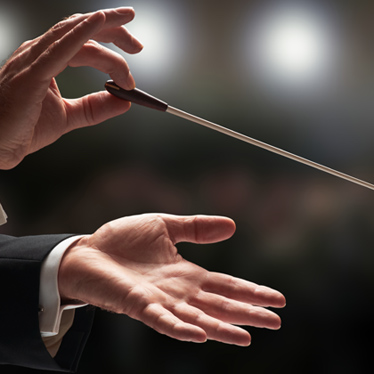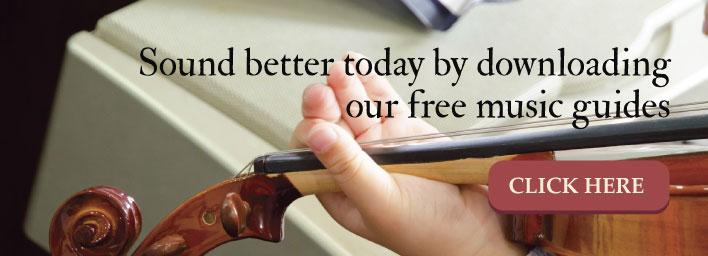A Conductor's Job is More Than Waving a Baton

Imagine what it must be like for someone attending their first classical music performance. From the perspective of the audience, they see and hear the musicians playing their instruments, and the back of the conductor, hands flying about. The uninitiated concert-goer might pick up on the cause and effect of a pointed baton or finger, and the music that follows.
But, beyond that, what’s with all the flailing? “Is that all there is to it?” a newbie might ask themselves.
A Little History
The role of conductor leading an orchestra goes back more than 2,000 years. One of the most well documented is Pherekydes of Patrae. Referred to as “The Giver of Rhythm,” Pherekydes is reported, in 709 B.C., to have used a golden staff, first to signal the musicians to begin, then as a manual metronome, beating it on the ground to help the musicians keep time.
Conducting has certainly evolved since then – could you imagine an orchestra company paying for a golden baton?! – though the fundamentals remain relatively unchanged. First and foremost is directing a performance. But, there’s so much more.
The Role of the Conductor
According to conductor Marin Alsop, “what does a conductor do?,” is the one question she’s asked more than any other.
“This is a very hard question to answer,” she said.
Just the same, we’re going to take a go at it.
There’s no singular role a conductor plays. He or she is a traffic cop, coach/mentor, ambassador, and yes, a performer. In many instances, a conductor also serves as music or artistic director. Depending on the orchestra, there could be more or fewer responsibilities, but one thing is certain: The conductor is the leader. And, as one study proved, though an orchestra can perform without a conductor, it performs measurably better with one.
In some orchestras, a director, concertmaster and/or a committee decides which compositions to perform. With others, the conductor decides, though it’s not unusual for the conductor to have a voice in organizations in which he or she doesn’t have the autonomy to select the programs.
Unlike an orchestra’s concertmaster, the first-chair violinist who plays a crucial role, including coordinating the other string sections, the conductor is responsible for the entire orchestra. Ultimately, it’s the conductor who weaves the individual musicians and their sections into a cohesive unit and gives life to the music on the page (or tablet).
Think of the root of the word “conductor.” This is someone who, through the orchestra, channels or conducts the composer who created the music. Before rehearsals begin, the conductor has internalized how to interpret a piece of music. If not necessarily evident to the untrained ear, serious music students and their teachers can detect any subtle, but intentional, differences in performances of Bach’s Brandenburg Concerto No. 6, for example. For whatever reason, the conductors of those orchestras interpreted the music somewhat differently, even if it’s just how long a particular note is held.
There could be tens or hundreds of thousands of notes in a piece of music. Each one is meaningful. If the composer is available, a conductor might consult with him or her about how to represent those notes. Considering that orchestras often perform the work of composers who are long gone, it’s up to the composer to present an artistic vision for a score and communicate that interpretation to the musicians.
Just like in Pherekydes’ day, not a single note is played until the conductor cues the orchestra. And the conductor tells the musicians when the performance is over. In between, while keeping time with hand gestures, conductors are, effectively, acting as quality control managers. They not only have to quickly redirect a musician who erred, but also anticipate any potential missteps. Sometimes, because the conductor’s hands are already engaged, he or she might head off trouble by making eye contact with one of the musicians and communicating with a facial expression, as Alsop explained in a recent interview.
Beyond A Performance
Not only is a conductor’s job more than waving a baton, it goes beyond the rehearsal and performance hall. A conductor often is required to be an ambassador for the orchestra, connecting it with a particular community and attending fundraisers, as needed, to schmooze donors and potential supporters. The conductor may be counted on to generate interest in certain performances and provide outreach to help grow a local audience.
Typically well educated, often holding a master’s degree, conductors naturally have a deep and genuine love of music. At some point in their careers they were excellent musicians, usually soloists, and many great conductors mastered more than one instrument along the way. And that makes perfect sense considering they need to have the trust and respect of the entire orchestra.
Perhaps you have an interest in becoming a conductor? If so, check out our blog post, which details the career path to becoming a conductor.


